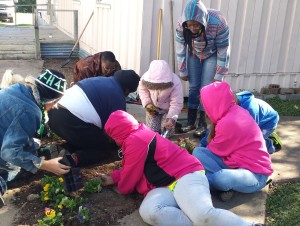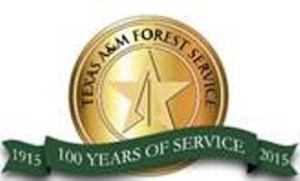Farm & Ranch
Texas youth celebrating National 4-H Week, One Day 4-H

By: Paul Schattenberg
Texas 4-H’ers involved in community service projects statewide
COLLEGE STATION – Each year during National 4-H Week more than 12,000 Texas 4-H youth participate in over 350 service projects across the state, said Dr. Chris Boleman of College Station, Texas 4-H Youth Development director and member of the National 4-H Council board.
“This year, National 4-H week will be from Oct. 4-10,” Boleman said. “During this week, Texas 4-H clubs statewide will showcase the great things that 4-H offers young people and highlight the incredible 4-H youth in the community who work each day to make a positive impact.”
Boleman said Texas 4-H Youth Development is the youth outreach component of the Texas A&M AgriLife Extension Service, part of the Texas A&M University System. 4-H Week will culminate with One Day 4-H on Oct. 10 – a day set aside each year for 4-H members, parents, leaders and volunteers to provide service to their communities and say “thank you” for their support of the 4-H program.
“This year 4-H members and clubs will be engaged in a variety of activities to provide service to individuals, groups and nonprofit organizations in their communities,” said Dr. Toby Lepley, assistant state director for Texas 4-H Youth Development. “Some of the projects slated for this year include visiting senior centers, community clean-ups, fundraisers, food, clothing and book drives, a veteran appreciation event and pet adoption.”
Lepley said this year’s community service activities will also include numerous tree plantings throughout the state.
“For the first time in the seven-year history of One Day 4-H, Texas 4-H Youth Development will have a featured service project as part of the week’s celebration activities,” Lepley said. “Texas 4-H Youth Development is partnering with the Texas A&M Forest Service to help celebrate that agency’s 100th anniversary of protecting the citizens of Texas and the country.”
The Forest Service is providing one bur oak tree — one of the only trees that can grow successfully in all 254 counties of Texas — to each county so it may be planted in a courthouse square, on city hall grounds or at some other notable public venue where it can be seen and appreciated by those in the community.
“For 100 years, the service has been helping protect and save the lives of Texans and others through its many efforts,” Lepley said. “We’re glad we can help them celebrate their achievements even as the Texas 4-H members and clubs celebrate their own. We hope we can make this a historical milestone for both agencies.”
Lepley said at this time, 4-H’ers in counties throughout the state have scheduled almost 200 tree plantings for either 4-H Week or One Day 4-H.
To see a list of 4-H Week and One Day 4-H projects in Texas, go to http://texas4-h.tamu.edu.
Boleman said National 4-H Week activities also will include participation by members and clubs throughout Texas and nationwide in a single, innovative experiment on 4-H National Youth Science Day slated for Oct. 7.
“This year’s 4-H national science experiment will be called Motion Commotion and will give youth the opportunity to explore the physics of motion, particularly applied to distracted driving,” Boleman said. “This innovative experiment was developed by Oregon State University’s Cooperative Extension program and demonstrates the physics of a speeding car collision combined with distracted driving. It is a simulated activity focusing on the physical and human factors of motion.”
To learn more about National Youth Science Day, go to http://www.4-h.org/nysd/.
Boleman noted that participation in 4-H has a significant positive impact on young people. He said recent findings from the Tufts University “4-H Study of Positive Youth Development” indicate that, when compared to their peers, young people in 4-H are almost four times more likely to contribute to their communities. They are also twice as likely to pursue healthy behaviors and to engage in science, technology, engineering and math, or STEM, programs outside regular school hours.
To learn more about 4-H, go to http://www.4-H.org, or go to Facebook at www.facebook.com/4-H or Twitter at https://twitter.com/4H.
-30-
Find more stories, photos, videos and audio at http://today.agrilife.org
Farm & Ranch
Managing Show Cattle Through The Winter

By Heather Welper
Husband and wife duo, Heather and Calvin Welper, are the Co-Owners and Operators or Two C Livestock, located in Valley View, Texas.
The pair’s operation has a show cattle focus where they raise and sell purebred heifers of all breeds and club calf Hereford steers.
When it comes to show cattle, the Welpers know a thing or two including how to prepare for the cold winter months and the Texas major show season run.
To read more, pick up a copy of the November edition of North Texas Farm & Ranch magazine, available digitally and in print. To subscribe by mail, call 940-872-5922.

Farm & Ranch
Double M Ranch & Rescue

By Hannah Claxton, Editor
As the sun rises each day, so do the dozens of mouths that Meghan McGovern is responsible for getting fed. Rather than the sounds of a rooster crowing, McGovern hears the bellows and bleats of a variety of exotic deer, the chortle of kangaroos, the grunts of water buffaloes, and the chirps of a lemur.
Nestled against the banks of the Red River, the Double M Ranch and Rescue, with its high game fences and deer sprinkling the landscape,s its in stark contrast to the surrounding ranches.
“Having deer is kind of like eating potato chips- you can never actually have just one,” said McGovern with a laugh.
McGovern has several herds to take care of- fallow deer, axis deer, water buffalo, goats, and bison. In smaller numbers, there’s also a few kangaroos, a lemur, a potbelly pig, a pair of zebras, a watusi, and a few horses.
To read more, pick up a copy of the November edition of North Texas Farm & Ranch magazine, available digitally and in print. To subscribe by mail, call 940-872-5922.

Farm & Ranch
Acorn Toxicity

By Barry Whitworth, DVM, MPH
With the prolonged drought, most pastures in Oklahoma end up in poor condition. With the lack of available forage, animals may go in search of alternative foods.
If oak trees are in the pastures, acorns may be a favorite meal for some livestock in the fall. This may result in oak poisoning.
Oak leaves, twigs, buds, and acorns may be toxic to some animals when consumed.
To read more, pick up a copy of the November edition of North Texas Farm & Ranch magazine, available digitally and in print. To subscribe by mail, call 940-872-5922.

-

 Country Lifestyles2 years ago
Country Lifestyles2 years agoScott & Stacey Schumacher: A Growth Mindset
-

 Country Lifestyles8 years ago
Country Lifestyles8 years agoStyle Your Profile – What your style cowboy hat says about you and new trends in 2017
-

 HOME8 years ago
HOME8 years agoGrazing North Texas – Wilman Lovegrass
-

 Outdoor10 years ago
Outdoor10 years agoButtercup or Primrose?
-

 Country Lifestyles5 years ago
Country Lifestyles5 years agoAmber Crawford, Breakaway Roper
-

 Equine1 year ago
Equine1 year agoThe Will to Win
-

 Country Lifestyles9 years ago
Country Lifestyles9 years agoJune 2016 Profile – The man behind the mic: Bob Tallman
-

 Country Lifestyles8 years ago
Country Lifestyles8 years agoDecember 2016 Profile, Rusty Riddle – The Riddle Way







